What are the most important items in a store besides design? That’s right, products. An online store won’t be a store without having any products, so let’s learn how to add a new product to the website.
Let’s follow these simple steps to add a new item to the store:
- Login to OpenCart admin panel. Navigate to Catalog -> Products
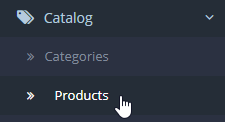 and click the Add New button in the top right corner of the page.
and click the Add New button in the top right corner of the page.
- General tab contains following fields:
- Product Name – this field will display name of your item.
- Description – here you can add your preferred product description and other necessary details.
- Meta Tag Title – it’s an important SEO element, used by search engines.
- Meta Tag Description – SEO product page description used by search engines.
- Meta Tag Keywords – a set of your product keywords used by search engines.
- Product Tags – a combination of product tags, used for product description for store customers. Used for product search within the website.
In General tab, you can also add your product information for different languages by switching language name tabs.
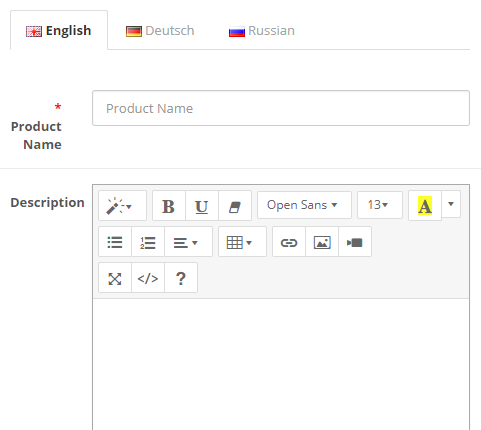
- After filling in all necessary general information, let’s proceed to Data tab, which contains following fields:
- Model – unique item model number. It’s a required field that should contain letters and digits.
- SKU – Stock Keeping Unit.
- UPC – Universal Product Code
- EAN – European Article numder.
- JAN – Japanese Article numder
- ISBN – International Standard Book Number.
- Location – address of product location.
- Price – product price.
- Tax Class – tax class category applied on this exact product. In case this item is not taxable, None should be set.
- Quantity – total number of items available in store for this exact product.
- Minimum Quantity – minimum number of product items that can be purchased.
- Subtract Stock – a field that allows you to automatically decrease the number of items in stock once customers purchase products.
- Out of Stock Status – message displayed on the website when the product is out of stock.
- Requires Shipping – shows if the product needs to be shipped or not.
- Date Available – the date when this specific product becomes available for purchase.
- Dimensions – product length x width x height.
- Length Class – product length measuring units. Available options are millimeter, centimeter, inch.
- Weight – product weight.
- Weight Class – product weight measuring units. Available options are a kilogram, gram, pound, ounce.
- Status – has two options: Enabled, which shows that product is displayed on website frontend and Disabled, that reflects the fact product is not displayed on the website and can be accessed only via admin panel for further editing.
- Sort Order – product priority number in general list of products on the website. The lower the priority number, the higher it’s placed on the list. An item with priority 1 is always on the top.
- After filling all necessary information in Data tab let’s move to Links. Here you will find following fields:
- Manufacturer – displays product manufacturer and places this exact product on manufacturer page in the store.
- Categories – category or categories that the product belongs to. A product is placed on the categories pages in the store automatically after those are selected.
- Filters – allows to select filters, that will be applied to the product in case Filter module is enabled on the website.
- Stores – defines which exact store will be selling this product.
- Downloads – a field to add download link if the product is a downloadable one.
- Related Products – allows adding related products by typing their names in. These products are displayed in Related Products section on the product page.
- Next let’s fill in the Attribute tab, which aims towards adding product options, that are used mainly for product comparison.
- After Attributes comes Option tab, where some extra selections like product size, color, etc can be made before adding the product to cart.
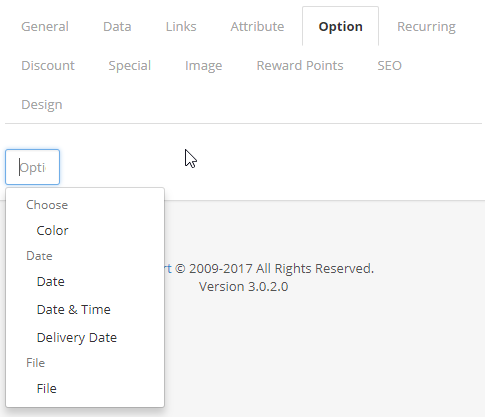
- Recurring tab allows setting recurring payments if ones are required.
- Discounts are set in the same named tab when creating a product or editing it.In order to set a discount the following fields should be filled in:
- Customer Group – defines for what customer group discount will work.
- Quantity – the number of products discount will be applied to.
- Priority – defines discount priority in case multiple discounts are applied at the same time.
- Price – product price after applying discount.
- Date Start – the day discount starts.
- Date End – the day discount ends.
- Special tab is quite similar to Discount one, but with the difference, that product will be considered to be special offer. Fields in this tab are identical to the previous one.
- Images tab allows adding products images. Each image has a sort order field, which defines images order on the product page.
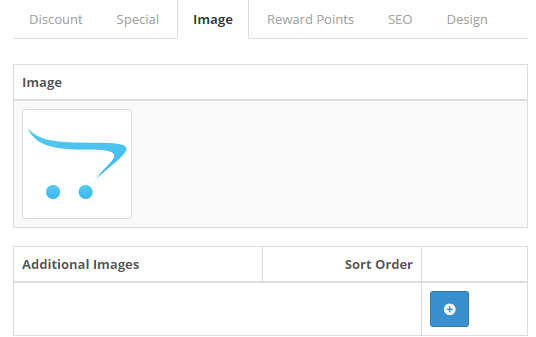
- Fill in fields in Reward points tab if you are using some kind of a loyalty or bonus program on your website, which allows customers to collect points for each purchase on the website.
Points field requires a number of points necessary to buy this exact item. In case the product shouldn’t be purchased with reward points, the number should be set as 0 or left blank.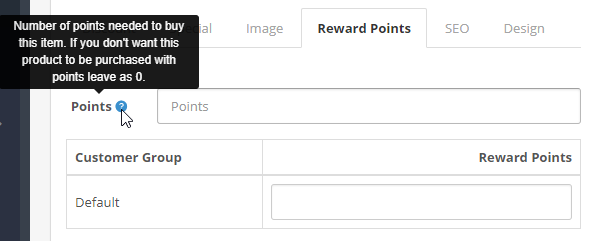
- SEO tab contains fields for unique product keyword for each language, which will help products to be found by search engines. Keyword field can’t contain spaces, those should be replaced with “-”. Also, it’s very important that the same keyword is used for only one product on the website.
- Last, but not least is Design tab, which allows creating overrides for specific designs if you wish to display this product in other layouts than the product page.
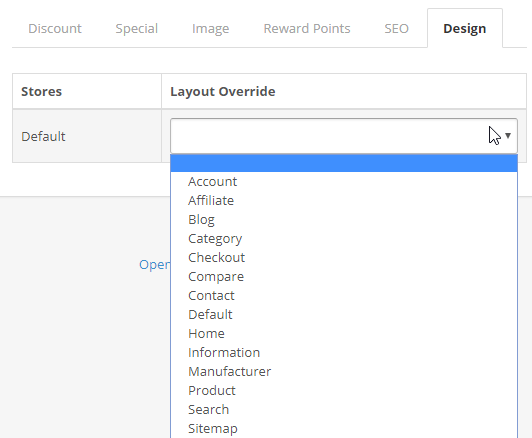
- When you are satisfied with the added product information, please click the Save button in the top right corner of the page to complete product creating process.
Congratulations, now you should be able to view your new product on the website.











